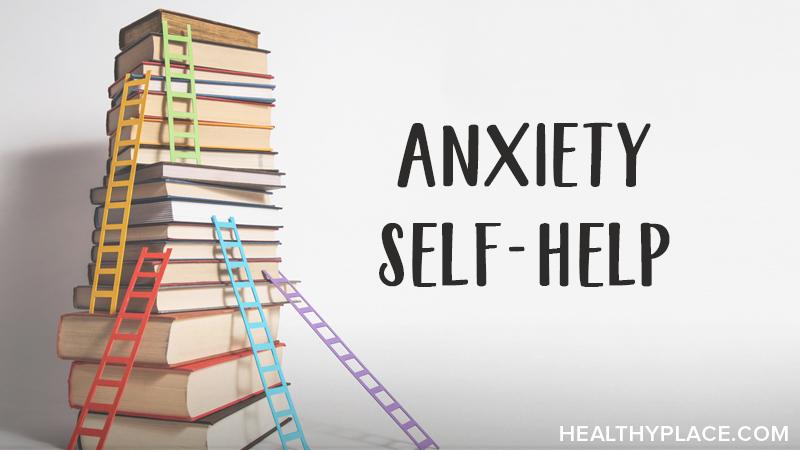
What problem? A lack of sexual desire is no stranger among us. It is the most common sexual condition in America—some 25 percent of us suffer from it.
KELLY SEEMED TO HAVE IT ALL. A LOVING MOTHER of three and a public-relations executive in Manhattan, she had a handsome and charming partner who was a successful entrepreneur. They jetted off for vacations in the Caribbean and dined in the finest restaurants. But their relationship floundered in one intractable area.
"After a while," Kelly says, "he just stopped wanting to have sex. He'd go months without even touching me."
It's a subject that's full of shame: low sex drive. When your partner has no interest in sex despite your best efforts, it's easy to become perplexed. And without guidance, partners may characterize the problem in ways that can destroy the relationship.
In a society saturated with sexual imagery, it seems strange that some people have no desire for sex. But it is a startlingly common problem. Millions of people suffer from a condition known as hypoactive sexual desire (HSD)--about 25 percent of all Americans, by one estimate, or a third of women and a fifth of men. Sex researchers and therapists now recognize it as the most common sexual problem.
In recent years, experts have turned their attention to the causes of HSD, and sex therapists are working on strategies to treat it. Although there is a 50 percent positive outcome in treatment, many of those who have HSD don't seek help. This is usually because they don't realize it's a problem, other issues in the relationship seem more important or they feel ashamed.
Many couples in conflict may have an underlying problem with sexual desire. When desire fades in one partner, other things start to fall apart.
How little is too little?
For Pam, happily married and in her forties, her once healthy sexual desire simply disappeared about six months ago. "I don't know what has happened to my sexual appetite," she says, "but it is like someone turned it off at the switch." She and her husband still have sex, maybe once every few weeks, but she does it out of obligation, not enthusiasm.
"I used to enjoy sex," Pam says. "Now there's a vital part of me that's missing."
Ordinary people aren't in a constant state of sexual desire. Everyday occurrences--fatigue, job stress, even the common cold--can drive away urges for lovemaking. Usually, however, spending romantic time with a partner, having sexual thoughts or seeing stimulating images can lead to arousal and the return of a healthy sex drive.
Yet for some people, desire never returns--or was never there to begin with. Frequently, even healthy sexual fantasies are virtually nonexistent in some people who suffer from HSD.
Just how little sex is too little? Sometimes, when a partner complains of not having enough sex, his problem may actually be an unusually high sex drive. Experts agree that there is no daily minimum requirement of sexual activity. In a recent British survey, published in the Journal of Sex and Marital Therapy, 24 percent of couples reported having no sex in the previous three months. And the classic study, Sex in America, found that one-third of couples had sex just a few times a year. Although the studies report frequency of sex, not desire, it's likely that one partner in these couples has HSD.
One tiny pill
Four years ago, another sexual problem--erectile dysfunction--received a sudden burst of attention when a medical "cure" hit the shelves. Before came along, men with physically based problems suffered impotence in silence, and without much hope. Now many couples enjoy a renewed reservoir of passion.
Obviously, any pill that relieves hypoactive sexual desire would be wildly popular. Unfortunately, the causes of HSD seem to be complex and varied; some sufferers might be treated with a simple pill, but most will likely need therapy--not chemistry.
One common source of reduced desire is the use of antidepressants known as selective serotonin reuptake inhibitors. SSRIs have been found to all but eliminate desire in some patients. Antidepressants such as Prozac (Fluoxetine) and are among the most widely prescribed drugs for treating depression. Yet one distressing side effect is a drop in sex drive. Some studies indicate that as many as 50 percent of people on SSRIs suffer from a markedly reduced sex drive.
Researchers believe that SSRIs quash the libido by flooding the bloodstream with serotonin, a chemical that signals satiety. "The more you bathe people in serotonin, the less they need to be sexual," says Joseph Marzucco, MSPAC, a sex therapist practicing in Portland, Oregon. "SSRIs can just devastate sexual desire."
Fortunately, researchers are studying antidepressants that act through other channels. Bupropion hydrochloride (Wellbutrin), which enhances the brain's production of the neurotransmitters dopamine and norepinephrine, has received extra attention as a substitute for SSRIs. Early studies suggest that it may actually increase sexual desire in test subjects. A study reported last year in the Journal of Sex and Marital Therapy found that nearly one-third of participants who took bupropion reported more desire, arousal and fantasy.
It's all in your head
Physiological problems can also lead to a loss of sexual desire. Men with abnormal pituitary glands can overproduce the hormone prolactin, which usually turns off the sex drive. As reported in a recent issue of the International Journal of Impotence Research, tests of a drug that blocks prolactin found it increased the libido in healthy males.
In women, some experts believe that one cause of weak sexual desire is, ironically, low testosterone levels. Normally associated with brawny, deep-voiced men, testosterone is a hormone with a definite masculine identity. But women also make small amounts of it in their ovaries, and it plays an important role in their sexual lives. Without a healthy level of testosterone in the blood, some researchers believe, women are unable to properly respond to sexual stimuli. Furthermore, there is anecdotal evidence that testosterone supplements can restore the sex drive in women.n.
Rosemary Basson, M.D., of the Vancouver Hospital and Health Sciences Center in British Columbia, however, cautions that too little is known about the role testosterone plays in women. "We don't even know how much testosterone is normal," Basson says. "The tests designed for men can't pick up the levels found in women."
In one study suggesting that HSD is more psychological than physiological, Basson and her colleagues tested the effects of Viagra on women who reported arousal problems. Basson found that while the drug generally produced the physical signals of sexual arousal, many women reported that they still didn't feel turned on.n.
Indeed, many psychologists and sex therapists believe that most patients with HSD have sound bodies and troubled relationships. The clinical experience of Weeks has shown that two factors identified in a relationship can, over time, devastate the sex drive: chronically suppressed anger toward the partner and a lack--or loss--of control over the relationship. And once these issues threaten a healthy sex drive, lack of intimacy can aggravate the problems further. Without help, these issues can balloon until the relationship itself is seriously damaged. And, consequently, HSD becomes further entrenched.
Lacking the desire for desire
Although HSD is one of the most difficult to address of all sexual problems, it can be treated successfully. The key is to find a highly qualified sex and marital therapist who has experience in dealing with it. Unfortunately, while HSD is the most common problem that sex therapists see, millions of cases go untreated.
Some people who lack desire are just too embarrassed to seek help, especially men. Others are so focused on immediate concerns--such as a stressful job or a family crisis--that they put off dealing with the loss of a healthy libido. Still others have become so used to having no sex drive that they no longer miss it; they lack the desire for desire. These people represent the most severe cases--the hardest to treat.
Some people who don't get treatment find ways to adjust. "Thank goodness my husband is so patient and caring," Pam says. "He tries to spark interest, but when it is not ignited he'll settle for cuddling and caressing."
Other relationships can't survive the strain. After a year, Kelly and her boyfriend broke up. "I couldn't convince him that it was a problem," she says, "but it was."
FOR MEN ONLY
It's a paradox: Men are generally characterized as being ready, willing and able for sex at just about any moment of the day or night. But recent surveys show that up to 20 percent of men report little or no sexual desire. And the stereotype of the horny male makes it difficult for men with HSD to get to a healthy level of desire. Instead of getting stuck in a self-perpetuating loop of comparing one's own desire to the stereotype, men can try these techniques:
* LINKING INTIMACY AND SEX
There are plenty of men who boldly--and coldly--go from one conquest to the next. For them, sex is just sex. But many men don't feel this way. In fact, quite a few need to work their way up from zero. One way to get going is to link sex with intimacy. A walk on a quiet beach or caressing in front of a fireplace can eventually lead to lovemaking. Even more important is sharing a feeling of closeness and providing genuine emotional support. Satisfying a partner in this way can build a sense of accomplishment--and trust--that can help lead to increased desire.
* DON'T LOOK OVER YOUR SHOULDER
Sexy clothing, dim lighting, and suggestive play should get men in the mood. But rather than turn men with HSD on, the extra attention can backfire. Trying to force your partner into the mood can result in anxiety and frustration for both of you.
Sometimes the best way for men to get around this block is to look for the underlying problem. Going slowly, without pressure, and getting professional help can point you toward a solution.
* BAHISH PESSIMISM
After a while, one may wonder if desire will ever return. And sometimes, heartfelt attempts at change--even through therapy--can lead nowhere.
Don't give up. Getting past HSD often takes months, and sometimes years. A sex therapist may be needed to help guide a couple in building intimacy. And it takes work to deal with the issues that have suppressed desire. But this sort of work can result in a stronger overall relationship--and lead to desires and pleasures long forgotten.
FOR WOMEN ONLY
Some women blame their hormones; others fault their upbringing. But for women struggling with h HSD, it's hard not to blame themselves. They shouldn't. Desire can't be turned on with a switch. For women who find themselves without desire, guilt from themselves or their partners can often make things worse. Instead of playing the blame game, try these solutions:
* WORK ON THE RELATIONSHIP
Sex therapists agree that the level of a woman's sexual desire is often determined by how comfortable she is in her relationship. If she isn't sure about what her partner thinks of her--or how much she can trust him--the level of desire may plummet. Underlying problems with intimacy--such as fear of losing control or being controlled, rejection and conflicts leading to resentment--can suppress desire.
Sometimes, experts suggest spending more time together and away from the roles of everyday life. Try, for example, a sight-seeing outing, a bicycle ride or just dinner and a movie. When both partners can get out of their routines, they may well rediscover the joys of spending time together. Simple steps like these can help restore confidence in a relationship.
* BROADEN THE DEFINITION OF SEX
When it comes to sex, intercourse is the entire focus for many men. Unfortunately, too many women buy into this idea, as well. And for women with HSD, this intercourse-or-nothing outlook can create real barriers.
How about a full-body massage? Or a good foot rub? There are many ways partners can please each other without the pressure of having intercourse. And once a woman gets a taste for these pleasures, it can build into a desire for more traditional physical sex..
* IT'S OK TO FANTASIZE
To some women, fantasizing about sex with someone other than their partner is a betrayal. But fantasy and behavior aren't the same things. Experts agree that a healthy fantasy life is a way to build up sexual desire. So go ahead: close your eyes and dream of Brad Pitt.
* CREATE A SEXUAL ENVIRONMENT
Instead of waiting to stumble over sexual desire, women with HSD can work to create a more sexual mental environment. Take time to think about sex, how to build up a better sex life, or even to plan naughty sexual encounters with your partner. Often, a little proactive thinking will prime the pump of desire, leading to a more receptive state later.
ADDICTED TO SEX
If you think the media is sex-obsessed, take note: Even psychologists have a decidedly pro-sex bias. For proof, look no further than the "bible" of the psychological profession, the Diagnostic and Statistical Manual of Mental Disorders, or DSM.
Psychologists use the definitions in the DSM as a means of diagnosing--and treating--mental health problems. The DSM provides a three-part clinical definition for hypoactive sexual desire:
* Persistently or recurrently deficient (or absent) sexual fantasies and desire for sexual activity. The judgment of deficiency or absence is made by the clinician, taking into account factors that affect sexual functioning, such as age and the context of the person's life.
* The disturbance causes marked distress or interpersonal difficulty.
* The sexual dysfunction is not better accounted for by another disorder (except another sexual dysfunction) and is not due exclusively to the direct physiological effects of a substance (a drug or medication) or a general medical condition.
If having little or no sexual desire is a problem, what about wanting too much sex? The term "sexual addiction" was coined a few years back to describe people with an obsessive sex drive. Yet according to the DSM, wanting too much sex isn't a problem. No diagnosis for sexual addiction is described in its pages.
That doesn't jibe with the experience of mental health professionals, who see people coming into their offices displaying symptoms of out-of-control sexual desire. And according to Robin Cato, executive director of the National Council on Sexual Addiction and Compulsivity (NCSAC) in Atlanta, the lack of DSM acknowledgment hinders attempts to help such patients. "Without a DSM listing, few insurance companies are going to pay for treatment," Cato notes.
Not all professionals are enthusiastic about the movement to make sex addiction a disorder; some dismiss the effort as financially motivated. Michael Ross, Ph.D., a professor of public health at the University of Texas and the past president of the Society for the Scientific Study of Sexuality, doubts that the evidence is all in."Sexual addiction," says Ross, "does not meet the criteria for a classic addiction."
READ MORE ABOUT IT:
Hypoactive Sexual Desire: Integrating Sex and Couple Therapy, Gerald Weeks, Ph.D., and Nancy Gambescia, Ph.D. (Norton, 2002)
Gerald Weeks, Ph.D., A.B.S., is a professor of counseling at the University of Nevada in Las Vegas and a board certified sex therapist of the American Board of Sexology.
Jeffrey Winters, formerly with Discover magazine, is a science writer based in New York.
 Anxiety self-help is a type of anxiety management in which an individual experiencing anxiety takes charge of the condition and develops his or her own plan to
Anxiety self-help is a type of anxiety management in which an individual experiencing anxiety takes charge of the condition and develops his or her own plan to 



